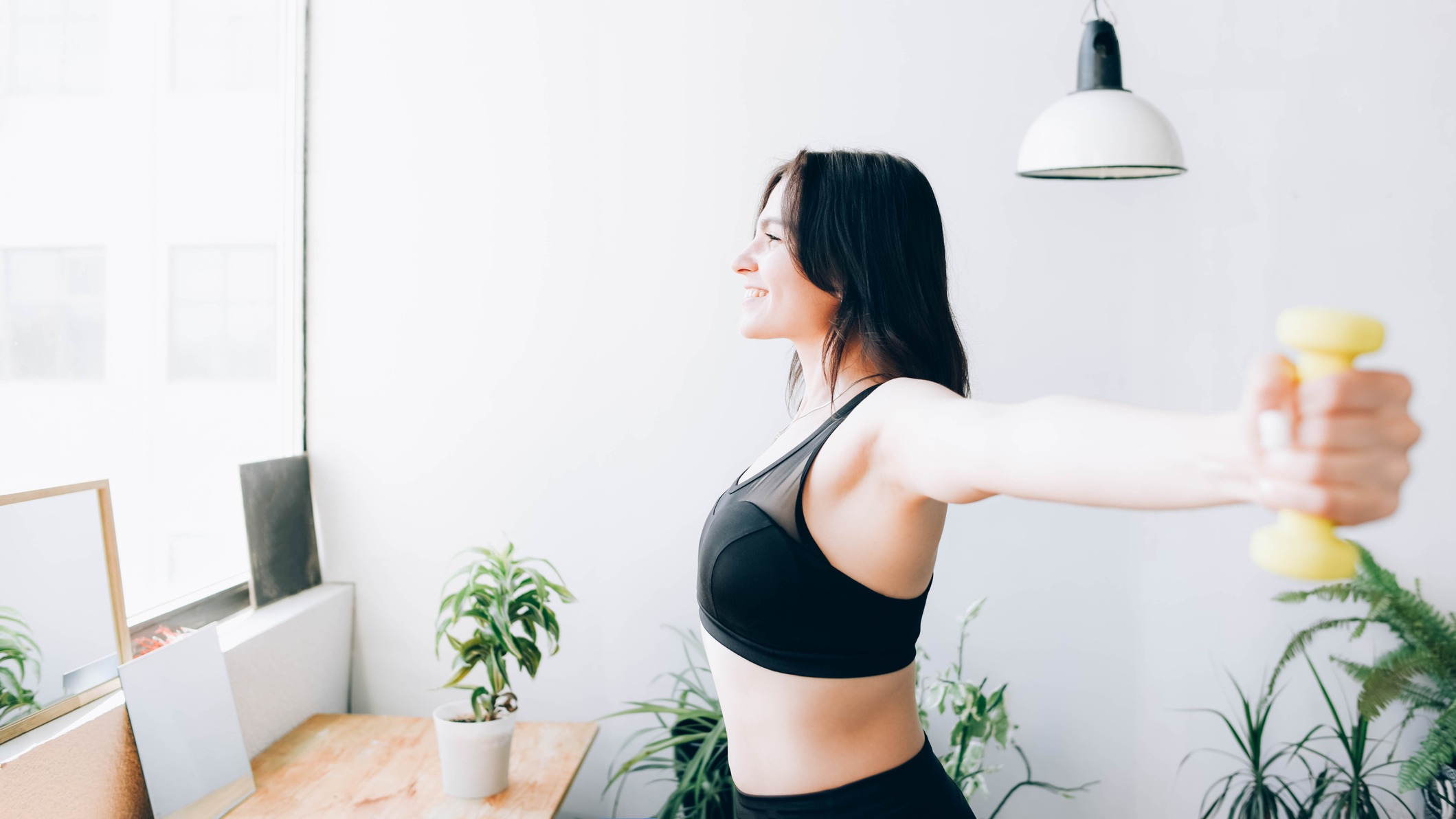
If you picture someone training their arms and chest, it's easy to picture an intense gym workout with heavy weights. Fortunately, that's not always the case—you can develop upper-body strength with just a few moves and a set of dumbbells.
If you don't already have a pair at home, we'd recommend investing in a set of adjustable dumbbells. That way, you can increase the weight as you get stronger without having to buy an entirely new set of weights.
This workout from personal trainer Alex Rice targets the biceps and the back with just five exercises, and you can do it from home or at the gym. Simply grab a pair of dumbbells and make sure you have something to sit on, like a bench or a chair.
Opt for a weight that is challenging for the repetition range, but manageable without having to compromise on form. If you come back to this workout on a regular basis, you should be able to increase the weight over time using the principles of progressive overload.
This workout uses supersets, meaning you'll be doing two exercises one after the other with no breaks in between. Supersets are great because not only do they save time, but they'll put your strength to the test, helping you build muscle quicker.
Watch Alex Rice's dumbbell arms and biceps workout
If you have access to a pull-up bar, Rice recommends starting the session with some pull-ups, or assisted pull-ups using a resistance band. As your upper-body strength improves, you should be able to complete more over time. If you're training at home or there's a queue for the pull-up bar, simply skip to the main workout.
Form is very important during this session, so ensure you engage your core muscle throughout the routine by making sure your ribs are pointing down and your back isn't arched. This is particularly important during the bent-over-rows and the plank variation exercise, where bad form could lead to lower-back issues.
During the seated exercises, keep an upright posture. If you are using a chair with a back, avoid leaning into the chair and brace your core and think about dropping your shoulders down and keeping your chest facing up to maintain good posture.
If you're new to strength training, make sure you're eating enough protein to build muscle and facilitate your training. As well as maximizing your progress, this will also help with recovery and prevent sore muscles, known as DOMs (delayed-onset muscle soreness).







